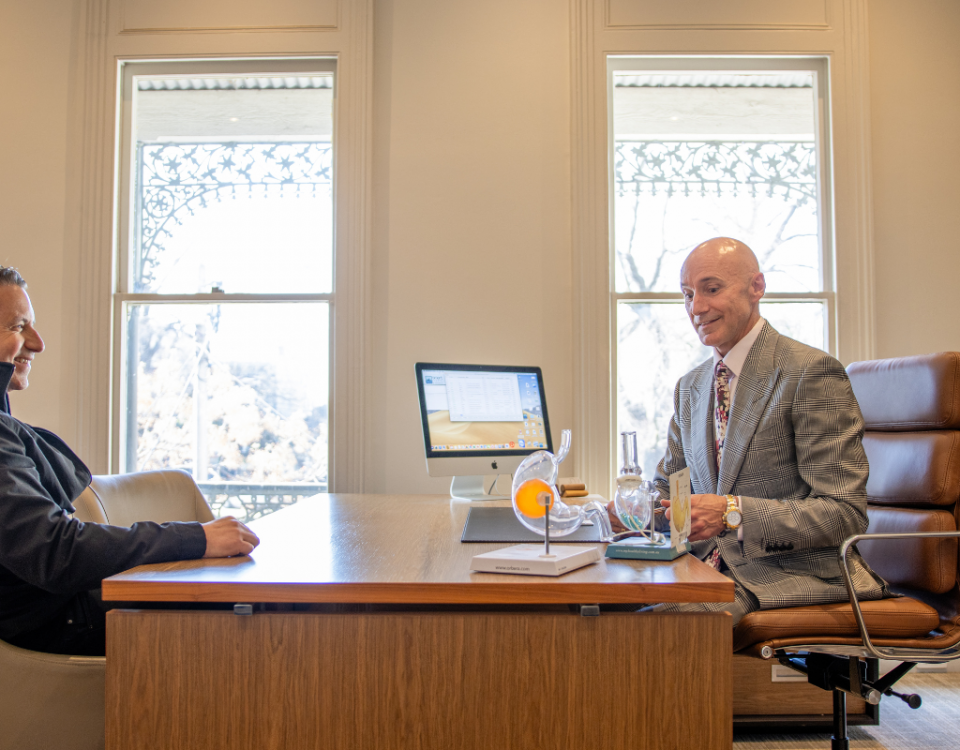
Navigating a weight plateau after bariatric surgery – a multidisciplinary guide for primary practice. The team at the Winnett Specialist Group shares key milestones to help GPs to support a patient through a plateau
Why do patients generally plateau when losing weight, and how long does a plateau typically last after bariatric surgery?
“The human brain does not recognise a ‘diet’ as a therapeutic intervention but rather a threat to survival from starvation,” says Mr Jason Winnett from the Winnett Specialist Group.
“This is also exactly why diets are so difficult and so often, will fail long term.”
“In the short-term medications (such as Semaglutide) can help patients lose weight by decreasing the magnitude of the famine reaction*1, while bariatric surgery can do this in the long term,” says Mr Winnett.
“Even after surgery, there will usually be a small plateau. This plateau generally lasts for a few weeks; however, if patients remain compliant, they typically see a return to weight loss after that.”
How much weight is normally lost after bariatric surgery?
Long-term studies such as the landmark Swedish Obese study of 4047 obese patients, indicate that even after 15 years there was very significant long-term weight loss with surgical procedures*2.
“In the short-term, typically, most weight loss occurs in the first 6-9 months post-surgery, and weight loss still continues for 12 months and then stabilises,” says Mr Winnett.
He says typical early weight loss after surgery ranges from 47-80% of excess weight, but often weight regain is 15-25% of the lost weight *3.
“One thing I have noticed with many patients is that this initial weight loss can be rapid and this can sometimes give patients an unrealistic sense of how much weight loss is possible, because a lot of the initial loss is water not fat.
“That is why expectations should be carefully managed in primary care, particularly after three months, when patients are less likely to see their surgeon.”
He says after the first month or so, a more realistic fat loss of 1kg per week is typical on a very low kiloJoule eating plan,” says Mr Winnett.
“Long term strategies to navigate periods of weight plateau are vital in primary practice.”
How does protein help avoid plateau post-surgery?
“Protein is a macronutrient priority after surgery for a number of reasons,” says Winnett Specialist Services Dietitian Ashleigh Gale.
“Protein first of all facilitates the healing and recovery of the body after surgery.”
“Secondly, whilst the body is in a significant kilojoule deficit and a person is not ingesting sufficient protein, the body tends to use our muscle stores for energy as well as our fat stores. This reduces our lean muscle mass.”
She says the ultimate goal is to reduce body fat whilst preserving as much muscle mass as possible which in turn makes us more metabolically active (burning more calories at rest).
In addition to that, protein plays a key role in the digestion and absorption of nutrients, as well as regulation of immune cells.
How does the post-surgery puree diet work?
“One to two weeks post-surgery, most patients will move to a blended puree diet,” says Ashleigh.
“This is a blended puree diet where we aim for 3 to 4 meals such as high protein yoghurt, cottage cheese, soft scrambled eggs, thickened soups or mashed up tuna/salmon with avocado. Patients will also have to think about adding some additional tasteless protein into their fluids or food in order to hit their protein goals which start off at around 60-80g per day and can increase to 1g/kg of their ideal body weight (not current).”
“Between 4-6 weeks, most patients can return to normal textures – about ¼ cup per meal in the first few months post op, increasing to around 1 cup per meal for those that are 9-12 months into their journey. “
“We want to still focus on higher protein, lower carbohydrate options. Think foods such as eggs, lean meats, chicken and fish, tofu, high protein dairy such as yoghurt, and with lower starch vegetables or salad.”
What investigations should GPs do to help keep patients on track?
GPs should conduct post-operative screenings for iron, vitamin B12, and folic acid at 6-monthly and 12-monthly intervals, according to bariatric and laparoscopic surgeon Mr. Jason Winnett. “Annual screening for Vitamin D, Vitamin A, Vitamin E and thiamine (if there is persistent vomiting) or copper if there are unresolved iron issues is also advised.”
How can patients avoid plateau at home?
- Avoiding too many added sugars, refined carbohydrates or highly processed foods
- Avoiding large meals (regardless of food type)
- Restricting alcohol to 1-2 small glasses a week
- Avoiding greasy or spicy foods
- A high fibre diet of unprocessed carbohydrates and low glycaemic index foods can assist with the stabilisation of blood glucose and avoid large fluctuations that can put patients at risk of dumping syndrome.
- Alpha-glucosidase inhibitors can help delay digestion of carbohydrates (if dumping syndrome is a problem)
- Avoiding fluids in the immediate pre-meal period and for 30 minutes after
- For long-term maintenance after surgery, aim for three entrée plate-sized meals (around 1 cup each) and high protein snacks between meals if physically hungry. Learn to tune into physical hunger signals and, most of the time, avoid eating when not hungry for reasons such as boredom, stress, high emotion, or social settings.
- Patients should still have the ability to enjoy the foods they want at times or special occasions. However, we encourage these healthy dietary habits the majority of the time.
How can GPs encourage patients to exercise to help prevent a plateau after surgery?
Primary physicians have a vital role in implementing an “exercise prescription” for bariatric patients’ post-surgery.
According to a systematic review in Obesity Journal on thousands of patients tracked for exercise post-surgically, the patients who exercised after their surgery saw their Body Mass Index (BMI) drop 4.2% more than the patients who did not exercise *5.
And a 12-week exercise program after bariatric surgery of treadmill walking, rowing and cycling improved post prandial blood glucose, according to another study in Diabetes, Obesity and Metabolism. However, the study also found that bariatric patients:
- “Are typically much less likely to expend energy than non-obese patients”
- “Represent a population who may benefit greatly from exercise”
- “More randomised controlled trials are needed to…. inform clinical practice regarding much-needed guidelines for exercise following bariatric surgery.”
Winnett Specialist Exercise and Lifestyle Consultant Sarah Pizzi says GPs can help patients by encouraging them to add a weight resistance training program and employ the following strategies post-surgery.
![]()
-
Do a little walking a lot
For less invasive procedures such as the Orbera® Gastric Balloon and the Lap Band, gentle walking 5 to 10 minutes a day exercise can be started within 1-2 days of surgery.
For more invasive procedures, such as the Gastric Sleeve or Bypass, patients should be able to sit in a chair on the day of surgery, and by day two or three, many patients can start gentle walking.
![]()
-
Build slowly
Start by walking just two to five minutes per day, then add an extra two minutes every third day. The initial goal is to walk 30-60 minutes per day, but this can be broken up into multiple 10-minute walks.
![]()
-
Add weights early
A light weights program (1-2 kg) is OK to start 10-14 days after surgery. Twice a week for 30-45 minutes is ideal. Avoid heavy weights and ask your surgeon or trainer if you are unsure. Certainly, avoid lifting children, heavy shopping, bags of kitty litter and boxes.

-
Avoid dynamic abdominal exercises
For the first eight to 12 weeks, to allow the incision to heal, avoid dynamic abdominal exercises. Static holds, such as planking, are advised, as they help alleviate abdominal hernias near or around the incision.

-
Swim
Swimming is ideal because water reduces the impact on the body by as much as 90 percent, aiding joints and bones. Wait until the scar has healed before swimming, which is usually about two to three weeks.

-
Mix it up
Yoga, Pilates, and cycling are also ideal activities to start six to eight weeks after surgery, while sexual activity can resume once there is no pain, usually after four weeks.

-
Do not play competitive sport
For the first few months, especially in situations where you may be hit in the abdominal area, avoid playing competitive sports.

-
Do not exercise straight after eating
Always leave at least 2 hours after eating to help avoid indigestion, heartburn and getting a stitch.
Concluding our guide for GPs on managing weight plateaus post-bariatric surgery, it’s clear that sustained success lies in a comprehensive approach that includes nutritional guidance, physical activity, and emotional support. At Winnett Specialist Group, we see the big role GPs have in this journey. By using our shared advice, we can help patients move past plateaus and towards lasting health. Every step forward is a big win in the journey to better health.
Mr Jason Winnett
Laparoscopic and Bariatric Surgeon
P (03) 9417 1555
admin@winnettspecialistgroup.com.au
www.winnettspecialistgroup.com.au
Queens Terrace, 382 Victoria Parade, East Melbourne 3002
References:
Appetite and body weight regulation after bariatric surgery – PMC (nih.gov) *1
Effects of bariatric surgery on mortality in Swedish obese subjects – PubMed (nih.gov) *2
RACGP – Weight regain after bariatric surgery: Nutritional considerations *3
RACGP – The bariatric surgery patient – nutrition considerations *4
Exercise Following Bariatric Surgery: Systematic Review – PMC (nih.gov) *5




